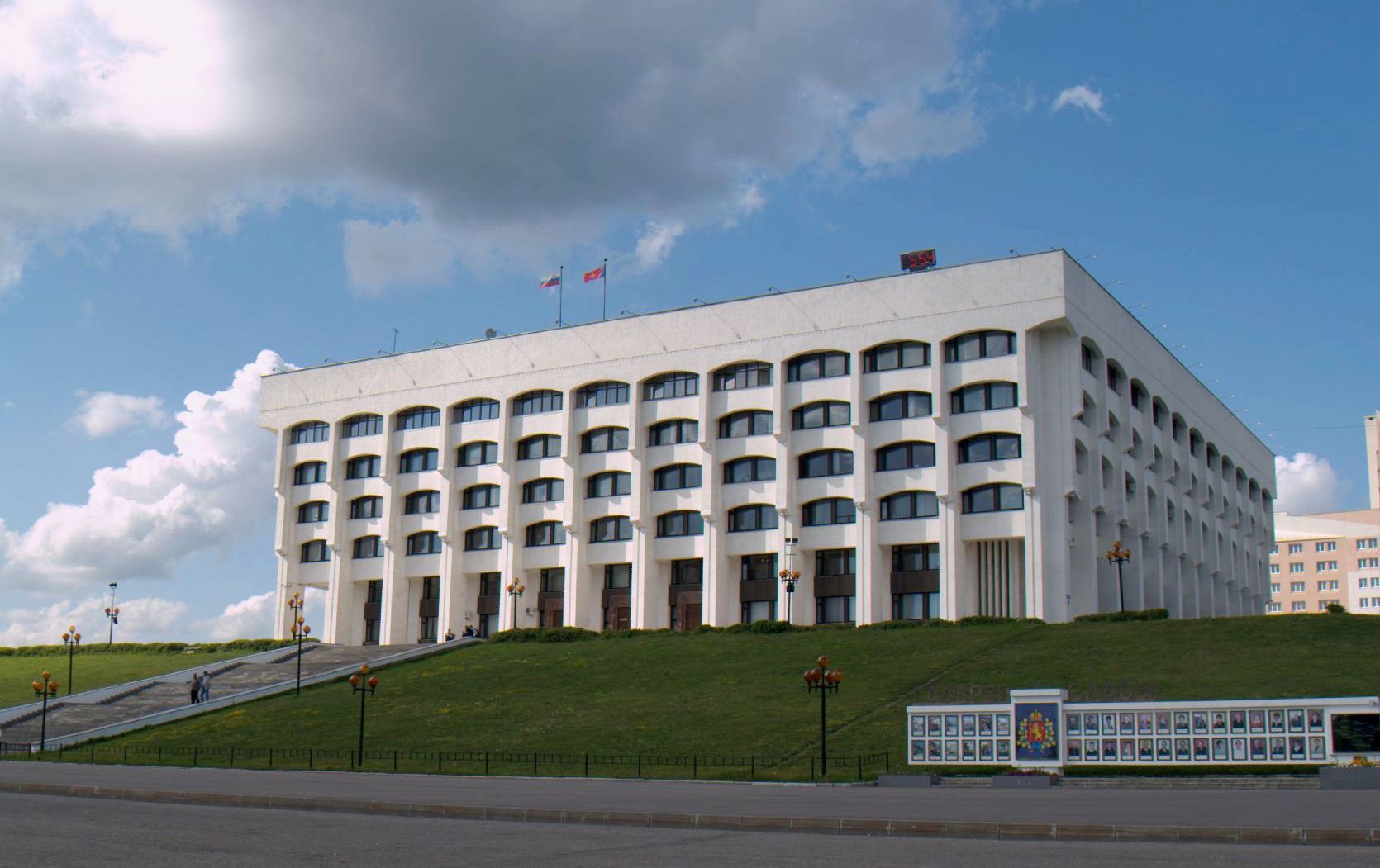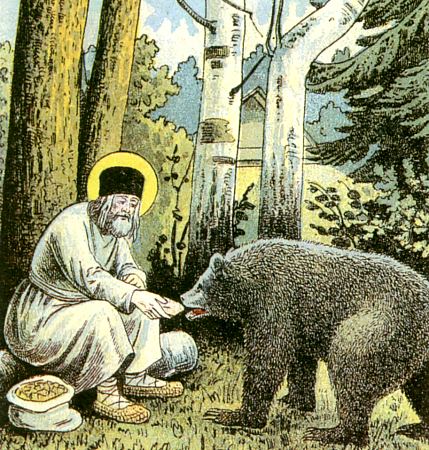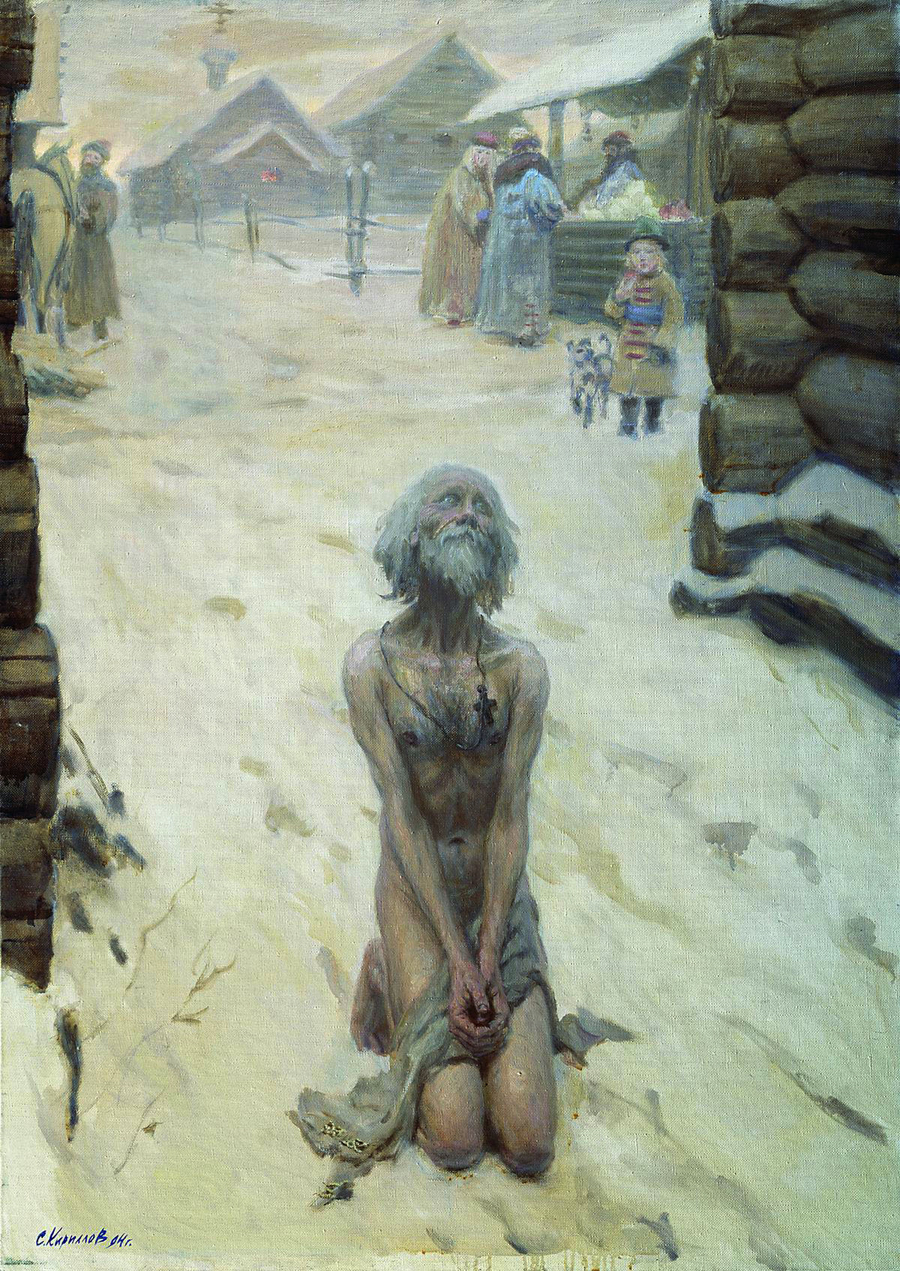|
Serge Nilus
Sergei Aleksandrovich Nilus (also ''Sergius'', and variants; russian: Серге́й Алекса́ндрович Ни́лус; – 14 January 1929) was a Russian religious writer and self-described mystic. His book ''Velikoe v malom i antikhrist, kak blizkaja politicheskaja vozmozhnost. Zapiski pravoslavnogo'' ("The Great within the Small and Antichrist, an Imminent Political Possibility. Notes of an Orthodox Believer", 1903), about the coming of the Antichrist, is now primarily known for the fact that in its second edition, in 1905, Nilus published ''The Protocols of the Elders of Zion'' as its final chapter. This was the first time that this text was published in full in Russia (an abridged version had reportedly been published in 1903 in the newspaper ''Znamya''). He wrote a number of further books, mostly on topics of the end times and the Antichrist, published between 1908 and 1917. After the Russian revolution, his warning of the coming of the Antichrist were interpr ... [...More Info...] [...Related Items...] OR: [Wikipedia] [Google] [Baidu] |
Sergius A
Sergius was the name of a Roman Patrician Gens, Sergia (or Sergii), originally from Alba Longa (Latium in central Italy). It is also found as Sergios. It may refer to: Name *Sergius (name) or Serge, a masculine given name Roman Catholic Popes *Pope Sergius I (died 701), Italian-born pope *Pope Sergius II (reigned died 847), Italian-born pope *Pope Sergius III (reigned 904–911), Italian-born pope *Pope Sergius IV (reigned died 1012), Italian-born pope Eastern Orthodox Patriarchs * Sergius of Bulgaria, Patriarch of Bulgaria c. 931 – c. 940 *Patriarch Sergius I of Constantinople, Patriarch 610–638 * Patriarch Sergius II of Constantinople, Patriarch 1001–1019 *Patriarch Sergius I of Moscow, Patriarch 1943–1944 Other Patriarchs *Sergius of Tella (died 546), Syriac Orthodox Patriarch of Antioch in 544–546 Other Christian Saints * Saint Sergius (martyr), Roman soldier companion of Saint Bacchus, martyred c. 303. *Sergius of Cappadocia (died 304), Martyred c. ... [...More Info...] [...Related Items...] OR: [Wikipedia] [Google] [Baidu] |
Troitse-Sergiyeva Lavra
The Trinity Lavra of St. Sergius (russian: Тро́ице-Се́ргиева ла́вра) is the most important Russian monastery and the spiritual centre of the Russian Orthodox Church. The monastery is situated in the town of Sergiyev Posad, about 70 km to the north-east from Moscow by the road leading to Yaroslavl, and currently is home to over 300 monks. History 14th century The monastery was founded in 1337 by one of the most venerated Russian saints, Sergius of Radonezh, who built a wooden church in honour of the Holy Trinity on Makovets Hill. Early development of the monastic community is well documented in contemporary lives of Sergius and his disciples. In 1355, Sergius introduced a charter which required the construction of auxiliary buildings, such as refectory, kitchen, and bakery. This charter was a model for Sergius' numerous followers who founded more than 400 cloisters all over Russia, including the celebrated Solovetsky, Kirillov, and Simonov mona ... [...More Info...] [...Related Items...] OR: [Wikipedia] [Google] [Baidu] |
Alexandre Du Chayla
Count Armand Alexandre de Blanquet du Chayla (25 March 1885 – 1945) was a French nobleman who converted to Russian Orthodoxy. He is chiefly remembered for giving crucial evidence and/or testimony for the prosecution at the Berne Trial in 1935 against the notorious Protocols of Zion. Du Chayla had been a journalist at the time of the 1913 blood-libel trial of Mendel Beilis and had written in support of the accusation. At Berne he insisted on payment of 4,000 Swiss francs for his testimony, which the plaintiffs found difficulty raising. Michael Hagemeister wrote that du Chayla's testimony was full of factual errors and inconsistencies, but unfortunately still taints the historiography of the Protocols. References * See also *Berne Trial * Henryk Baran *Protocols of Zion ''The Protocols of the Elders of Zion'' () or ''The Protocols of the Meetings of the Learned Elders of Zion'' is a fabricated antisemitic text purporting to describe a Jewish plan for global domination. ... [...More Info...] [...Related Items...] OR: [Wikipedia] [Google] [Baidu] |
Michael Hagemeister
Michael Hagemeister (born 9 January 1951 in Ellwangen, Baden-Württemberg) is a German historian and Slavist, an authority on ''The Protocols of the Elders of Zion'' and on Sergei Nilus. Hagemeister was employed at the universities of Marburg, Bochum, Basel, Innsbruck, Frankfurt (Oder) (''Viadrina European University''), and Berlin. Hagemeister served as researcher at the Department of History of the University of Basel and as temporary professor at the Department of History of Ludwig Maximilian University, Munich and at the Department of East European History at Viadrina European University, Frankfurt (Oder). Hagemeister wrote his doctoral thesis on the Russian philosopher Nikolai Fyodorov (1829–1903). In his current research he concentrates on the origins and early history of ''The Protocols of the Elders of Zion'' and the life and work of the Russian religious and apocalyptic writer Sergei Nilus (1862–1929). Research on the ''Protocols'' The Protocols of the Elder ... [...More Info...] [...Related Items...] OR: [Wikipedia] [Google] [Baidu] |
USSR
The Soviet Union,. officially the Union of Soviet Socialist Republics. (USSR),. was a transcontinental country that spanned much of Eurasia from 1922 to 1991. A flagship communist state, it was nominally a federal union of fifteen national republics; in practice, both its government and its economy were highly centralized until its final years. It was a one-party state governed by the Communist Party of the Soviet Union, with the city of Moscow serving as its capital as well as that of its largest and most populous republic: the Russian SFSR. Other major cities included Leningrad (Russian SFSR), Kiev ( Ukrainian SSR), Minsk ( Byelorussian SSR), Tashkent (Uzbek SSR), Alma-Ata (Kazakh SSR), and Novosibirsk (Russian SFSR). It was the largest country in the world, covering over and spanning eleven time zones. The country's roots lay in the October Revolution of 1917, when the Bolsheviks, under the leadership of Vladimir Lenin, overthrew the Russian Provisional Gove ... [...More Info...] [...Related Items...] OR: [Wikipedia] [Google] [Baidu] |
Vladimir Oblast
Vladimir Oblast (russian: Влади́мирская о́бласть, ''Vladimirskaya oblast'') is a federal subjects of Russia, federal subject of Russia (an oblast). Its closest border 66 Meter, km east of central Moscow, the administrative center is the types of inhabited localities in Russia, city of Vladimir, Russia, Vladimir, which is located east of Moscow. As of the Russian Census (2010), 2010 Census, the oblast's population was 1,443,693. The UNESCO World Heritage Site, World Heritage List includes the 12th-century cathedrals of Vladimir, Russia, Vladimir, Suzdal, Bogolyubovo, Vladimir Oblast, Bogolyubovo, and Kideksha. Geography Vladimir Oblast borders Moscow Oblast, Moscow, Yaroslavl Oblast, Yaroslavl, Ivanovo Oblast, Ivanovo, Ryazan Oblast, Ryazan, and Nizhny Novgorod Oblasts. The oblast is situated in the center of the East European Plain. The Klyazma River, Klyazma and the Oka River, Oka are the most important rivers. There are approximately three hundred lake ... [...More Info...] [...Related Items...] OR: [Wikipedia] [Google] [Baidu] |
Most Holy Synod
The Most Holy Governing Synod (russian: Святѣйшій Правительствующій Сѵнодъ, Святейший Правительствующий Синод) was the highest governing body of the Russian Orthodox Church between 1721 and 1917. It was abolished following the February Revolution of 1917 and replaced with a restored patriarchate under Tikhon of Moscow. The jurisdiction of the Most Holy Synod extended over every kind of ecclesiastical question and over some partly secular matters. Peter I of Russia established the Synod on January 25, 1721 in the course of his church reform. Its establishment was followed by the abolition of the Patriarchate. The synod was composed partly of ecclesiastical persons, partly of laymen appointed by the Tsar. Members included the Metropolitans of Saint Petersburg, Moscow and Kyiv, and the Exarch of Georgia. Originally, the Synod had ten ecclesiastical members, but the number later changed to twelve. Background A seri ... [...More Info...] [...Related Items...] OR: [Wikipedia] [Google] [Baidu] |
Seraphim Of Sarov
Seraphim of Sarov (russian: Серафим Саровский; – ), born Prókhor Isídorovich Moshnín (Mashnín) �ро́хор Иси́дорович Мошни́н (Машни́н) is one of the most renowned Russian saints and is venerated in the Eastern Orthodox Church. He is generally considered the greatest of the 18th-century ''startsy'' (elders). Seraphim extended the monastic teachings of contemplation, theoria and self-denial to the layperson. He taught that the purpose of the Christian life was to receive the Holy Spirit. Perhaps his most popular quotation amongst his devotees is "acquire a peaceful spirit, and thousands around you will be saved." Seraphim was glorified by the Russian Orthodox Church in 1903. Life Born 19 July (O.S.) 1754, Seraphim was baptized with the name of Prochor, after Prochorus, one of the first Seven Deacons of the Early Church and the disciple of John the Evangelist. His parents, Isidore and Agathia Moshnin, lived in Kursk, Russ ... [...More Info...] [...Related Items...] OR: [Wikipedia] [Google] [Baidu] |
Fool For Christ
Foolishness for Christ ( el, διά Χριστόν σαλότητα, cu, оуродъ, юродъ) refers to behavior such as giving up all one's worldly possessions upon joining an ascetic order or religious life, or deliberately flouting society's conventions to serve a religious purpose—particularly of Christianity. Such individuals have historically been known as both "holy fools" and "blessed fools". The term "fool" connotes what is perceived as feeblemindedness, and "blessed" or "holy" refers to innocence in the eyes of God.Frith, Uta. (1989) Autism: The Elegant Enigma. Malden, MA: Blackwell Publishing. The term ''fools for Christ'' derives from the writings of Saint Paul. Desert Fathers and other saints acted the part of Holy Fools, as have the ''yurodivy'' (or iurodstvo) of Eastern Orthodox asceticism. Fools for Christ often employ shocking and unconventional behavior to challenge accepted norms, deliver prophecies, or to mask their piety.Parry (1999), p. 233 Old Tes ... [...More Info...] [...Related Items...] OR: [Wikipedia] [Google] [Baidu] |
Nikolay Motovilov
Nikolay Aleksandrovich Motovilov (russian: link=no, Николай Александрович Мотовилов; 3 May 1809 – 14 January 1879) ''Dukhovny Sobesednik'' 2(46),2006 was a Russian landowner, , businessmanNikolay Motovilov as an ideal of Russian businessman by hegumen Peter Pigal and . [...More Info...] [...Related Items...] OR: [Wikipedia] [Google] [Baidu] |
Starets
A starets (russian: стáрец, p=ˈstarʲɪt͡s; fem. ) is an elder of an Eastern Orthodox monastery who functions as venerated adviser and teacher. ''Elders'' or ''spiritual fathers'' are charismatic spiritual leaders whose wisdom stems from God as obtained from ascetic experience. It is believed that through ascetic struggle, prayer and hesychasm, the Holy Spirit bestows special gifts onto the elder including the ability to heal, prophesy, and most importantly, give effective spiritual guidance and direction. Elders are looked upon as being an inspiration to believers and an example of saintly virtue, steadfast faith, and spiritual peace. Elders are not appointed by any authority; they are simply recognized by the faithful as being people "of the Spirit". An elder, when not in prayer or in voluntary seclusion, receives visitors (some who travel very far) and spends time conversing with them, offering a blessing (if the elder is an ordained cleric) and confession, and prayin ... [...More Info...] [...Related Items...] OR: [Wikipedia] [Google] [Baidu] |
Optina Monastery
The Optina Pustyn (russian: Óптина пýстынь, literally ''Opta's hermitage'') is an Eastern Orthodox monastery for men near Kozelsk in Russia. In the 19th century, the Optina was the most important spiritual centre of the Russian Orthodox Church and served as the model for several other monasteries, including the nearby Shamordino Convent. It was particularly renowned as the centre of Russian Orthodox eldership (staretsdom). History It is not clear when the monastery was established. Its name is probably derived from the Russian word for "living together", possibly because nuns were allowed into the cloister prior to 1504. Most of the monastery buildings were erected at the turn of the 18th and 19th centuries, when the monastery was being renovated as a centre of Russian staretsdom. In 1821, a hermitage for startsy was established away from the monastery. The startsy attracted crowds of devout Christians to Kozelsk. Among others, Optina Pustyn was visited by Fyod ... [...More Info...] [...Related Items...] OR: [Wikipedia] [Google] [Baidu] |
.jpg)




